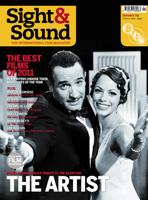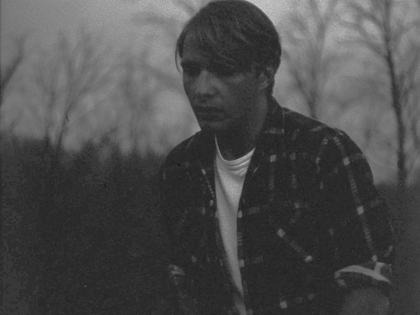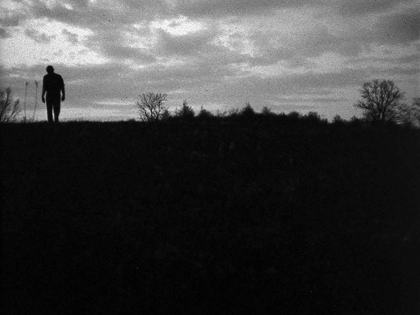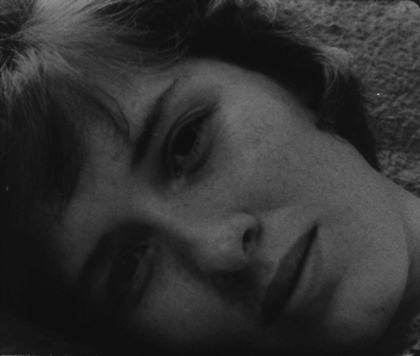Primary navigation


J.L. Anderson’s backwoods Appalachian love story is a forgotten classic of 1960s indie neorealism, says Ross Lipman
It was Peter Conheim of the Guild Cinema in Albuquerque who alerted me to the existence of a mysterious 1967 film by J.L. Anderson called Spring Night, Summer Night. He had seen it at the 2005 Rural Route festival, a touring programme curated by a former student of Anderson’s co-producer Franklin Miller: Mike Schmidt of Kino International. Village Voice described it as “the missing link between Shadows and The Last Picture Show” and it was, Peter said, a film I simply had to see.
I get sent DVDs all the time from colleagues I inherently trust, but I rarely have time to watch them. (I’m not a critic or true historian, and am frankly delighted that there are more gems out there than I can see in my lifetime.) So it was with Spring Night, Summer Night – it languished in a pile with other contenders for two years before I brought it along on vacation back in 2008. I found myself awake one night and popped it into my laptop. After a few minutes it became apparent what Peter had been trying to tell me. This wasn’t just a nice, obscure film that would speak to a few cinephiles like ourselves, but a compelling and beautiful drama that held its own with the very best of independent cinema.
What’s more, there was suddenly a context for it alongside works such as Charles Burnett’s Killer of Sheep (1979), Kent MacKenzie’s The Exiles (1961), Barbara Loden’s Wanda (1970), Billy Woodberry’s Bless Their Little Hearts (1984) and arguably Floyd Mutrux’s Dusty and Sweets McGee (1971). I had gradually been realising the existence of an unknown and completely accidental – but surprisingly coherent – body of American neorealism. These works used non-actors playing themselves alongside trained or semi-trained actors, location shooting with existing-light cinematography, and loose-at-best storylines to depict a gritty underbelly of American life unseen on screens on or off Hollywood. And they offered a window into lost chapters of America’s cultural history.
Set in rural south-eastern Ohio, Spring Night, Summer Night tells the story of a conflicted love affair with a distinctly hillbilly twist. The doomed couple may or may not be siblings. The machinations of small-town gossip blend with their own soul-searching to create emotional fireworks, which wind a discursive narrative through atmospheric dive bars, farms and rolling countryside. The story becomes just one part of a landscape of Americana in which the characters are engulfed by a larger reality from which there might be no escape, even in solitude. They’re inseparable from the environment in which they live, yet to escape it is their only hope. The land is as much a character as are the haunted leads, and it’s captured in exquisitely lyric cinematography by David Prince, Brian Blauser and Art Stifel.

Anderson (better-known among cineastes today for his collaboration with Donald Richie on the classic history The Japanese Film: Art and Industry) plucked his talented trio of cinematographers from among his students – having recently been hired to found the film production department at University of Ohio, Athens. He and co-writer, producer and editor Miller originally sought to adapt a 1920s story by Wilbur Daniel Steele set in Appalachia. The rights were unavailable – something Miller now cites as a fortunate break, in that it forced them (and co-writer Doug Rapp) to collectively author a story more suited to the times.
Unlike directors Burnett and Loden, Anderson and Miller weren’t from the community they depicted. Yet, like MacKenzie on The Exiles, their method was immersive. They spent two years scouting locations in the remote coal-mining hills of Ohio, picking up speech patterns and dialects, and writing the script. For the lead roles of Jessie and Carl they cast Larue Hall and Ted Heim, who had backgrounds in community theatre, and who convey all the tortured hope of youth. Cast and crew volunteered their time against a share of future profits, which unsurprisingly never materialised.
Shooting took place in the summer of 1965, which saw a 17-year locust season they hadn’t anticipated. The film’s bar scenes were shot in Columbus and filled with locals who had been given five dollars apiece in fake money. With beer going at 25 cents a bottle, in Miller’s words, “things got loose pretty quickly”. The forest scene near the film’s end was filmed in an area so remote that all the heavy 35mm gear had to be hand-carried a half-mile to the site. As the scene took three days to shoot, the crew camped out to guard the gear.
The incest theme that drives the film is the one aspect some audience members may find troubling; the potential siblings’ haunted love culminates in a scene that fully realises the moral issues at play. The crucial moment has an emotional ambiguity that is both disturbing and affecting, with close-ups of Hall as Jessie expressing alternately horror and love. The cinematography evokes an otherworldly pastoral vision – one that more than compensates for the camera’s occasional male gaze and the film’s intentionally questionable moral compass.

Spring Night, Summer Night premiered in 1967 at the Pesaro Film Festival. Anderson half-jokingly presented it as part of the “New Appalachian Cinema” – and I believe we’re still waiting to see the rest of those films. Filmmaker Willard Van Dyke was an early fan. Despite this reception, however, things soon went downhill. After a year spent seeking distribution, the film was scheduled to screen at the 1968 New York Film Festival, but was bumped at the last minute to make way for John Cassavetes’s Faces. Anderson’s film was eventually picked up not by the art-cinema scene, but by a New York exploitation distributor named Joseph Brenner. On seeing the success of the explicit Swedish film I Am Curious (Yellow), he decided his new purchase needed to be spiced up, and hired none other than a young Martin Scorsese to make recommendations for a re-edit.
According to legend, Scorsese told him the film was perfect as it was and should remain unchanged. But Brenner ignored him and went back to Anderson requesting that he shoot some gratuitous nude scenes. Brenner’s daughter subsequently discovered that the word ‘pregnant’ had never been used in a film title, and thought it would generate controversy. So the film was released under the awkward name Miss Jessica Is Pregnant. (She was right in a backwards kind of way: they found they couldn’t run newspaper ads in the South, where the word ‘pregnant’ was taboo.)
Needless to say, the re-edit flopped. Though the changes were minimal, much of the magic was lost. The gratuitous nudity in the Jessica version is just that, clouding the interesting moral ambiguity of the original even further. Nonetheless that’s how many know the film today: a sexed-up trailer can be seen at the Internet Archive, sandwiched between Mme Olga’s Massage Parlour and Michelle aka Sexy Gang. Anyone watching this for a thrill will be greatly disappointed, but the trailer does provide glimpses of the original’s lyric cinematography.
Both the original negative (recut to the Miss Jessica version) and the sole surviving print of the director’s cut are now safely housed at the UCLA Film & Television Archive, but as yet we have no funding to restore it. We await the day when funds are secured to allow us to correct the historical record.
Ross Lipman is an independent filmmaker, and film restorationist at the UCLA Film & Television Archive
No moss gathered: Demetrios Matheou talks to Nicholas Ray’s widow Susan about her restoration of his film class experiment and swansong We Can’t Go Home Again (October 2011)
They live! James Bell on the archive treasures, including Ross Lipman’s presentations of Wanda and Point of Order!, in the London Film Festival (October 2011)
The Red House: Charles Burnett remembers Edward G. Robinson in Delmer Daves’s disturbing 1946 small-town fairy tale (April 2011)
Open eye, open ear: Tom Charity on two versions of John Cassavetes’s Shadows (March 2004)
Days of Heaven reviewed by Tom Milne (Monthly Film Bulletin, May 1979)
The Last Picture Show reviewed by Tom Milne (Monthly Film Bulletin, April 1972)